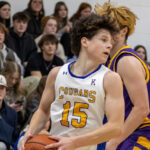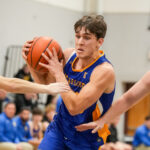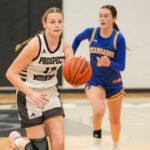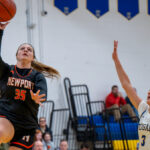NORTH SUTTON, NH – The hottest team in Division III wasn’t messing around on Monday night as the Kearsarge Cougars opened the game on a 25-0 run and ran away with a 70-29 victory over visiting Stevens.
The Cougars poured in 32 first-quarter points to take a 32-4 lead after one before letting off the throttle.
Kearsarge had nine players score, including three in double digits: Eli Whipple (21 points), Liam Miller (16) and Noah Whipple (15). The Cardinals were paced by 10 points from Cullen Neathawk.
With the win, the Cougars move to 8-0 on the season and sit alone atop the D-III standings. Stevens falls to 1-6.
Check out the full photo gallery by Haven Deschenes…





















































































































































































































































































































































































































